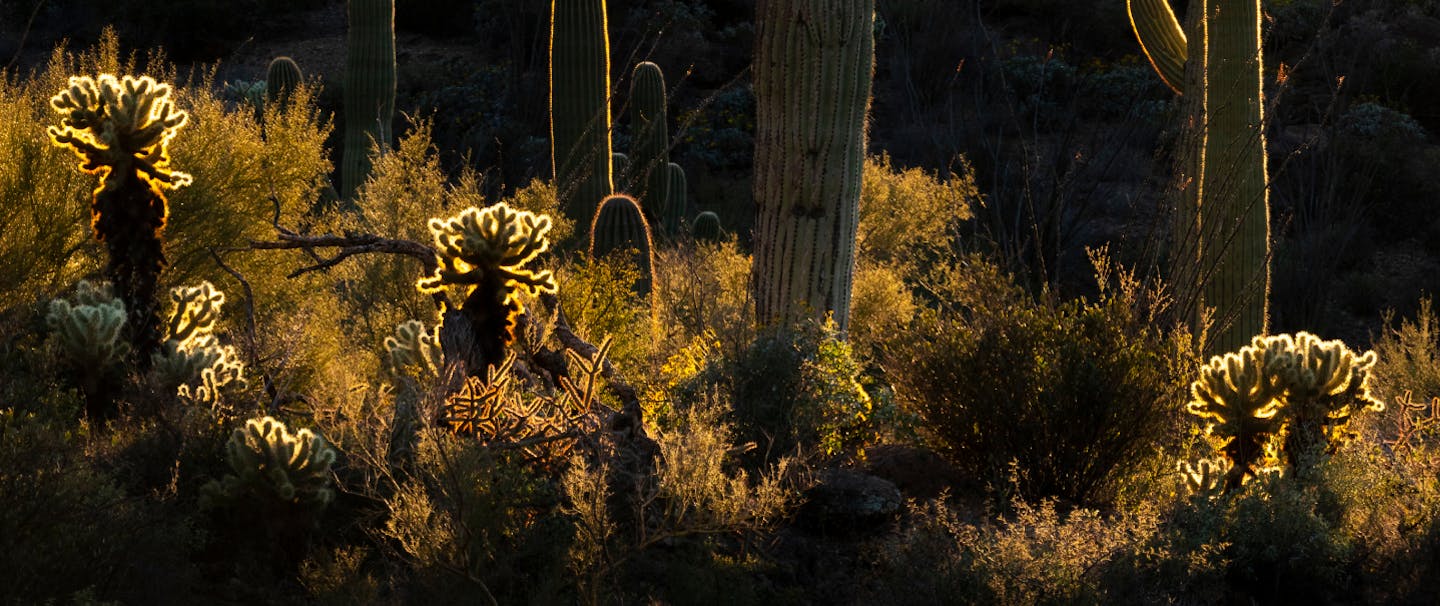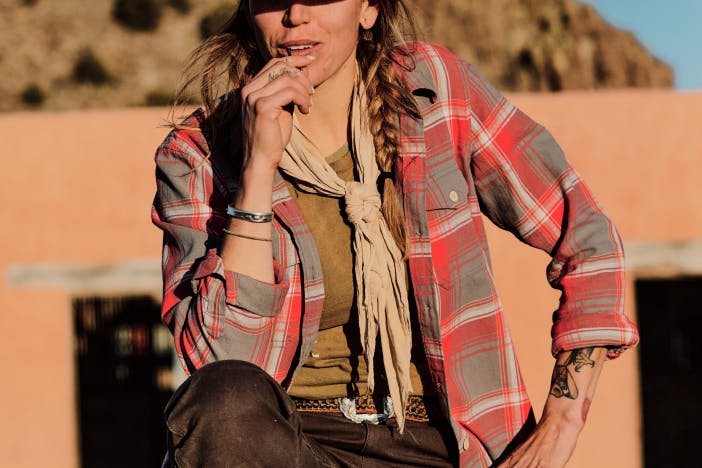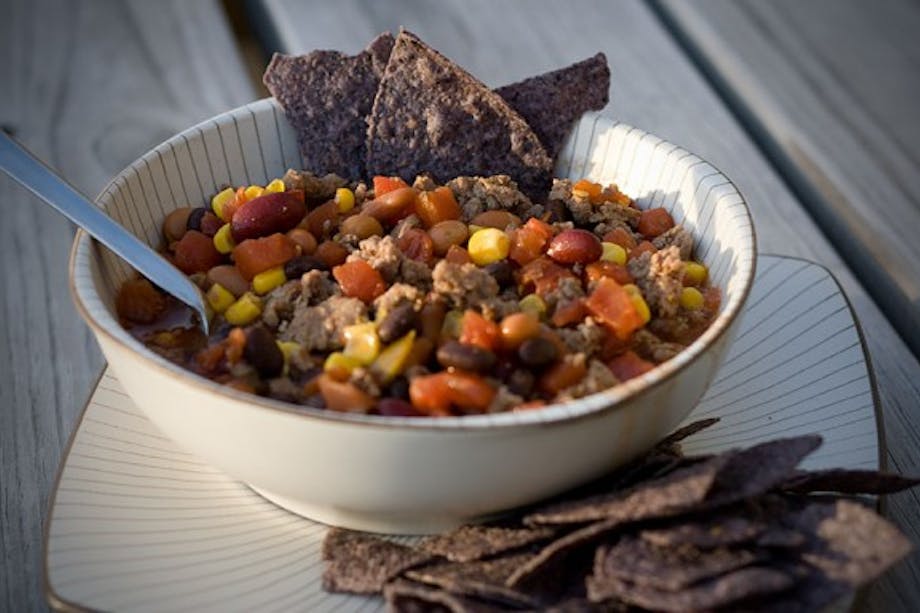John Slattery is a New Mexico based Bioregional Herbalist, forager, educator, and author helping people develop a deep and meaningful relationship with wild plants. His first book, Southwest Foraging, was released in 2016 on Timber Press, and Southwest Medicinal Plants was released in February 2020. Below he imparts some of his knowledge, highlighting a selection of the medicinal plants and their uses found in the Southwest.

John Slattery - author of 'Southwest Medicinal Plants: Identify, Harvest, and Use 112 Wild Herbs for Health and Wellness'.
BERMUDAGRASS
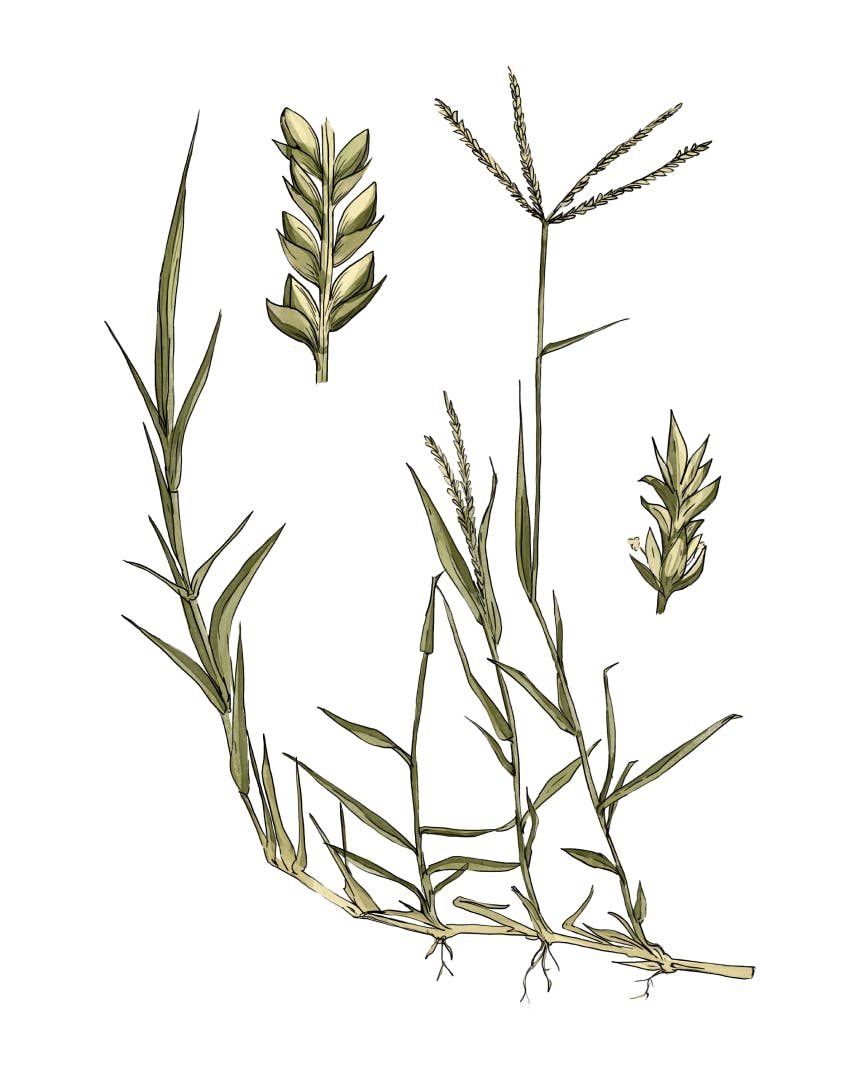
Bermudagrass (Cynodon dactylon)
Appearance: A perennial grass with thin blades that grow from creeping rhizomes.
Where to Find: Found abundantly throughout the Southwest below 6,000 feet elevation in waste places, backyards, parks, and waterways.
Medicinal Uses: This overlooked medicine is highly revered in India for its ability to rejuvenate the system and treat a wide array of ailments. Interestingly, the fresh juice is inhibitory to resistant bacterial strains (like MRSA) and has also been shown to inhibit certain cancer cell lines. Perhaps most importantly, ingesting a tea of bermudagrass (leaf, stem, rhizome) may help improve insulin resistance (it is antidiabetic, and improves cholesterol profile); it is also hepatoprotective (helping to protect the liver). Perhaps it’s time we viewed this plant in a whole new light.
ELDER
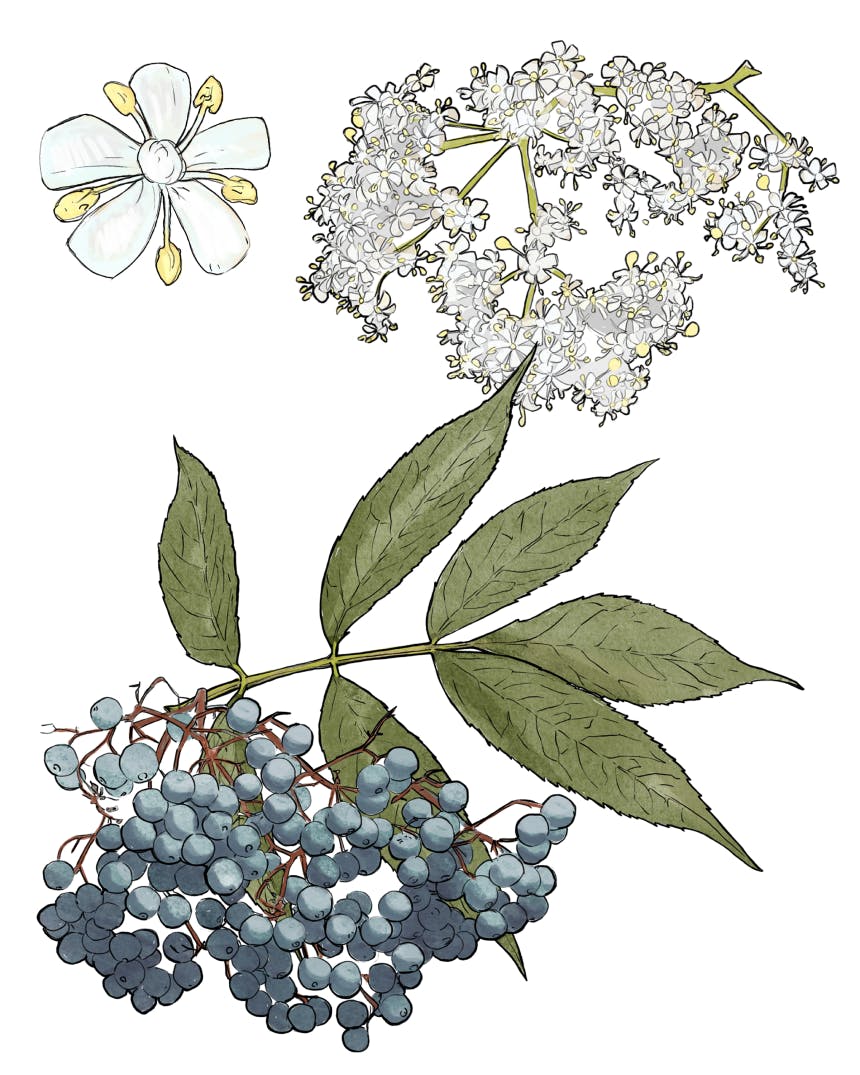
Elder (Sambucus nigra, S. canadensis subsp. nigra, S. mexicana, S. cerulea, etc.)
Appearance: A small deciduous tree, or shrub, with opposite, compound, shiny green leaves in a series of 3-9 finely serrated leaflets. Flat-topped clusters of tiny, fragrant, creamy-white flowers are followed by blue, black, red, white, or light-green ripe fruits.
Where to Find: In the Southwest, it likes moist areas from around 1,500 to 8,000 feet elevation.
Medicinal Uses: The catalog of medicinal uses for elder is vast. The root, stem bark, leaves, flowers, and berries all have value. All parts are significantly antiviral. Their preparation includes a tea, tincture, or syrup of the leaf, flower, and berries. The leaf is also healing to bone tissue for breaks, sprains, or osteoarthritis. The tea of the flowers can alleviate fever and be taken internally for mumps, measles, or scarlet fever.
MULLEIN

Mullein (Verbascum thapsus)
Appearance: Broad, velvety soft green leaves in a basal rosette. Flowers in the summer of the second year with a tall, central stalk covered in small yellow flowers opening along the length of the stalk. The plant dies back in the autumn after flowering.
Where to Find: Mullein grows abundantly in disturbed land throughout the canyons and mountains of the Southwest. Look to roadsides, forest clearings, canyon bottoms, and post-forest fire landscapes.
Medicinal Uses: A diverse medicine. The leaves are an excellent remedy for coughs and tightness or constriction in the chest, and as an aid in respiratory infections. An oil infusion of the flowers is pain-relieving to earaches and can be used for pain relief elsewhere on the body. The root of mullein is an amazing remedy for incontinence, as a tea or tincture.
SILK TASSEL
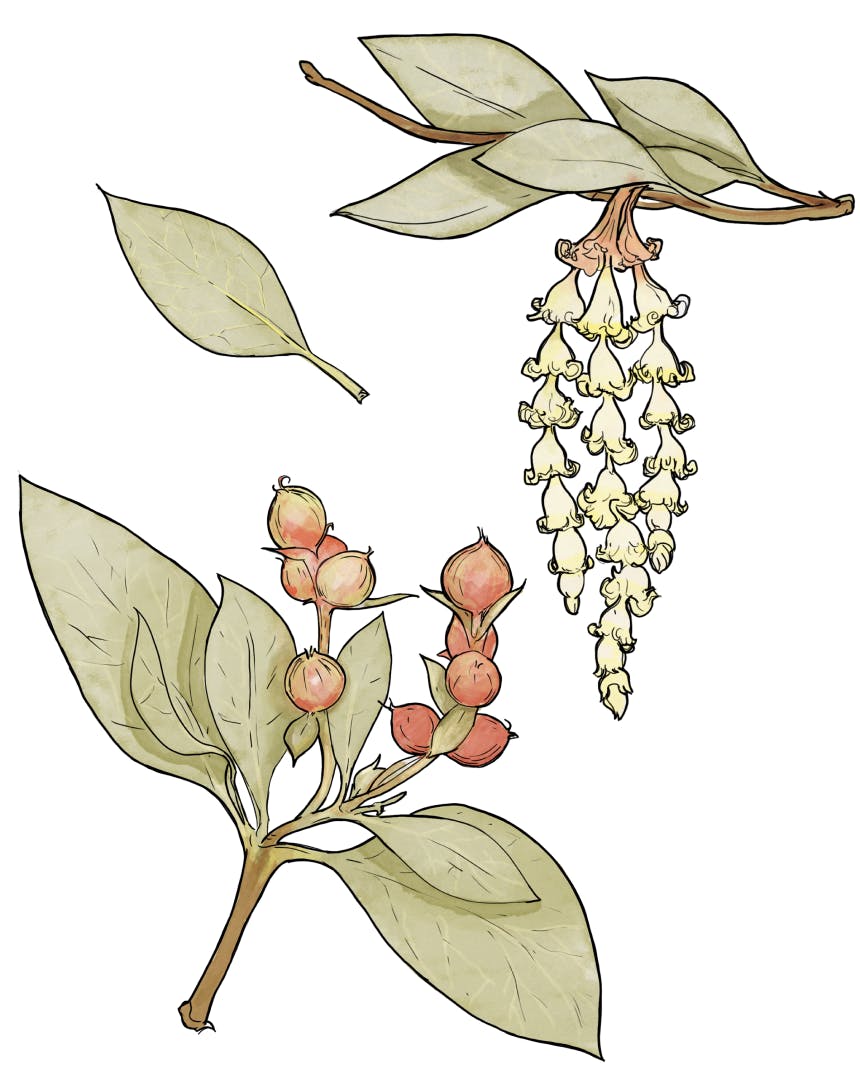
Silk Tassel (Garrya species)
Appearance: A multi-branched evergreen shrub, generally 5-10 feet in height and possessing opposite fuzzy, light green leaves that range from pointed to egg-shaped and rounded. The flowers hang down like tassels, and the blue-black fruits appear in the autumn.
Where to Find: Look to middle elevation canyons, boulder-strewn, north-facing hillsides, and riparian woodlands from southern California to the Texas Hill Country.
Medicinal Uses: Astringent to the digestive tract, it’s a vital remedy for diarrhea or dysentery. Also, a valuable anti-spasmodic for intestinal or menstrual cramping.
YERBA SANTA

Yerba Santa (Eriodictyon crassifolium illustration)
Appearance: E. angustifolium is a woody shrub normally 3-6 feet in height, with long, thin, shiny, yellowish-green, sticky leaves that are present whenever moisture is available. The white, scorpioid flower clusters unfurl in the early summer.
Where to Find: Within our region, yerba santa occurs in mid-elevation oak and piñon-juniper woodlands, chaparral habitats, disturbed areas, trails, and roadsides in well-drained soils.
Medicinal Uses: With a particular affinity for the lungs, yerba santa is well-suited to address cold, damp respiratory conditions such as coughs, colds, flu, pneumonia, and smoker’s cough. It will also aid in cases of hay fever, sinus congestion, sinusitis, bronchitis, asthma, and sore throat.
